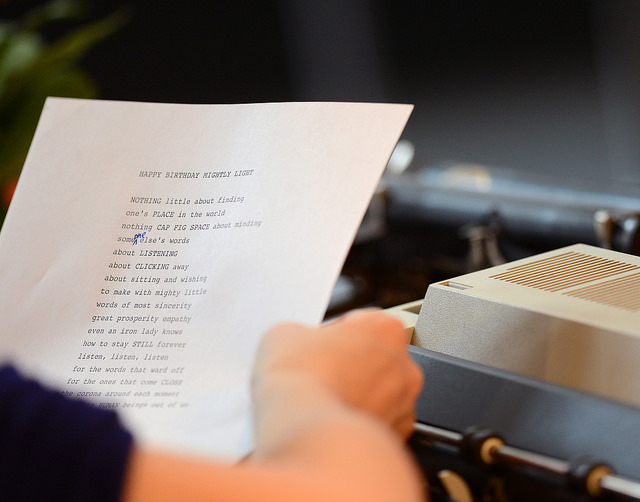Poems are like maps. All poetry styles have some type of form, a physical structure that makes it markedly distinguishable from prose. Reading poetry is about more than taking in the words. It’s also about using the arrangements of lines, sounds and rhythms to get to the meaning of the words. The relationship between sounds, repetition and movement push words beyond their literal meanings, making a work larger than the sum of its parts.
Common Poetry Styles
Acrostic: A poem that uses the first letter in each line to spell a word or phrase
Ballad: A poem that tells a story
Cento: A poem that uses lines from other poems
Double-dactyl: An eight-line poem in which each line contains two dactyls, a long syllable followed by two shorter syllables (e.g. Roger L. Robinson wrote in “Double-Dactyl”: “Long-short-short, long-short-short/ Dactyls in dimeter/…One sentence (two stanzas)/Hexasyllabically/ Challenges poets who/ Don’t have the time.”)
Elegy: A sad and thoughtful poem, often about an individual who died
Epic: Long narrative poem
Ghazal: A type of classical Middle Eastern poetry with 5 to 15 rhyming couplets and a shared refrain at the end of the second line
Haiku: Traditional Japanese poem with three lines; the first and third lines have five syllables, the second line has seven syllables
Lyric: A poem about the speaker’s feelings, moods or thoughts
Narrative: A poem that recounts a story
Ode: A three-part poem about a serious subject
Pantoum: A poem with two or more four-line stanzas; the second and fourth lines in one stanza are also the first and third lines of the next stanza
Sonnet: A 14-line poem written in iambic pentameter; common forms include English sonnets and Italian sonnets
Shi: Classical Chinese poems in which the even lines rhyme
Tanka: Similar to a haiku, but follows a 5-7-5-7-7 syllable pattern
Terza rima: A poem with stanzas that follow an aba, bcb, cdc, ded… rhyming pattern
Structural Elements in Poetry Styles
Stanza: A group of lines in a poem
Line: Individual line in a poem; it does not have to complete a sentence or thought
Couplet: Stanzas with two lines
Quatrain: Stanzas with four lines
Enjambment: When an idea in one line carries on to the next
Caesura: Punctuation that doesn’t occur at the end of a line
Feet: The type of two- or three-syllable unit on which a meter is based; a foot is the number and type of syllables in a meter; an iambic foot, for example, has an unaccented syllable followed by an accented syllable (e.g. the word “destroy”); types of meters include iamb, trochee, dactyl, anapest, spondee and pyrrhic
Meter: Patterns of stressed and unstressed syllables, or feet, in a poem; types of meters include monometer, dimeter, trimester, tetrameter, pentameter, hexameter, heptameter and octameter
Metrical patterns: The type of dominant foot in a poem and the number of times it appears in a line, such as iambic pentameter, a line with five iambic feet
Rhythm: The rhythmical sounds in a poem because of accented and unaccented syllables in words
Rhyme schemes: The pattern of rhymes at the end of the lines in a poem, indicated using letters; lines with the same letters rhyme with each other
Knowing about different poetry styles and the elements that make up a work is like having the legend to a map. Incorporate these elements into your own work to give yourself a challenge and to diversify your writing.
[Photo from Metropolitan Transportation Authority of the State of New York via CC License 2.0]

